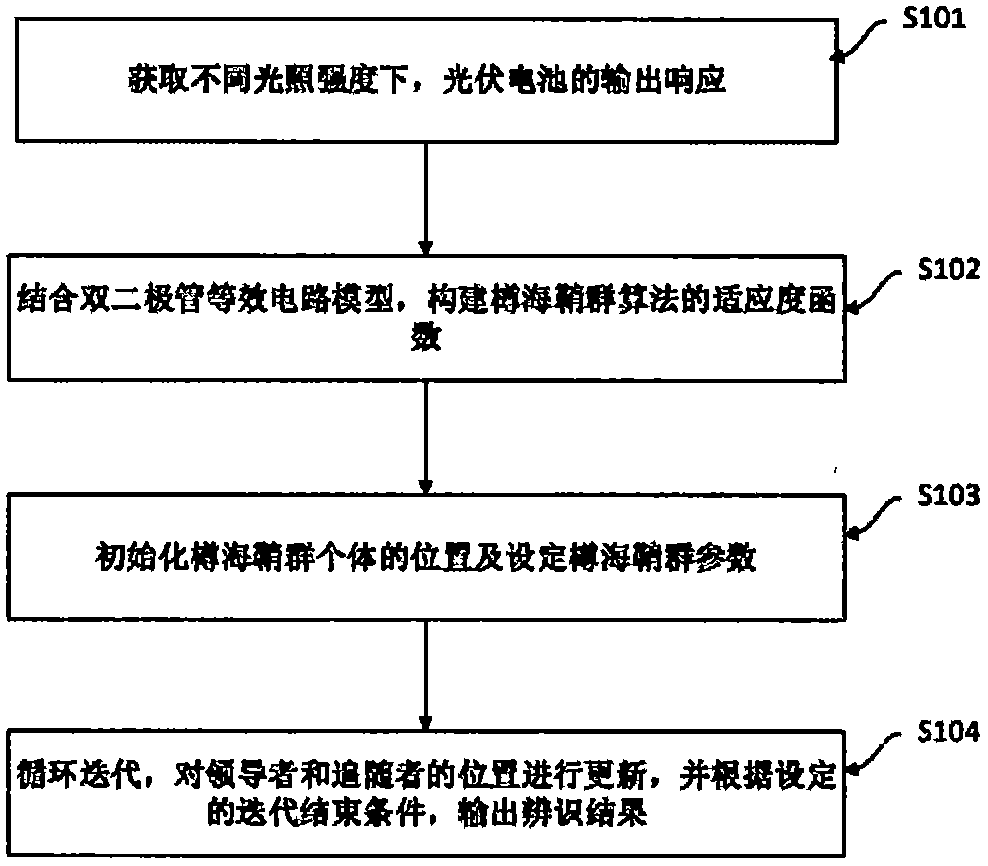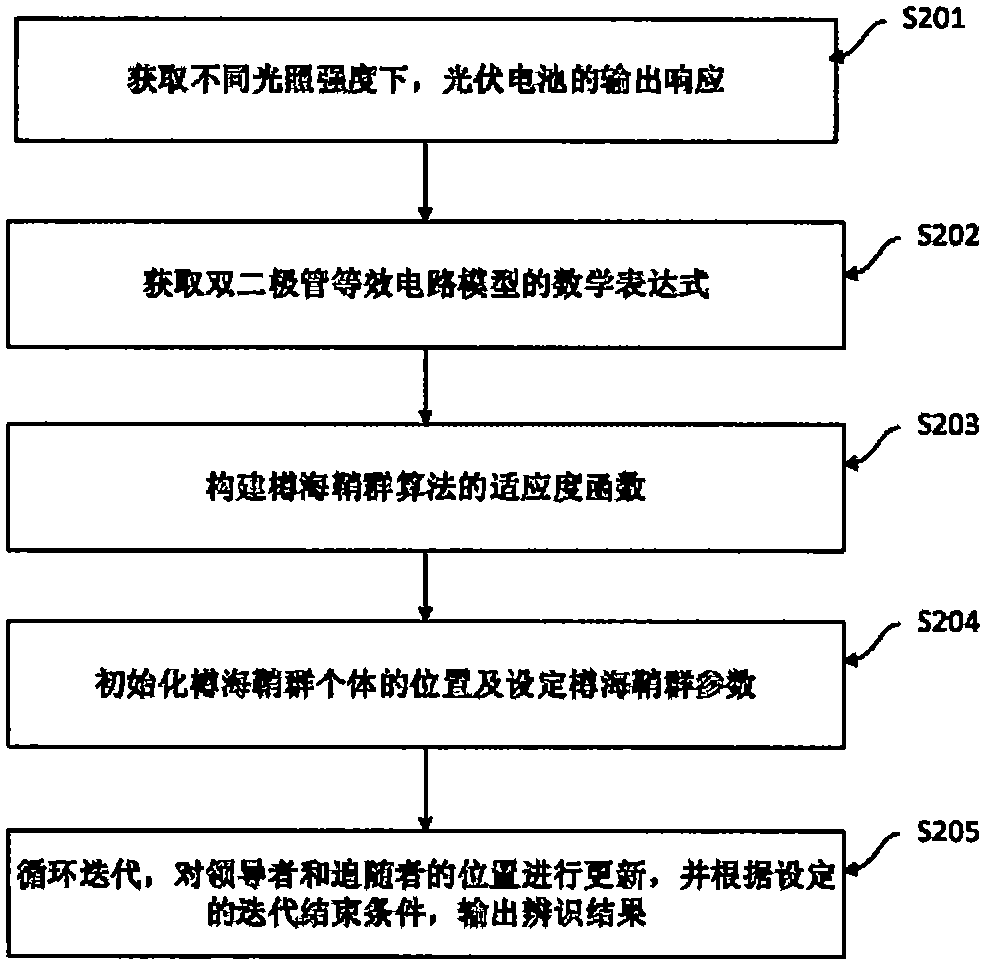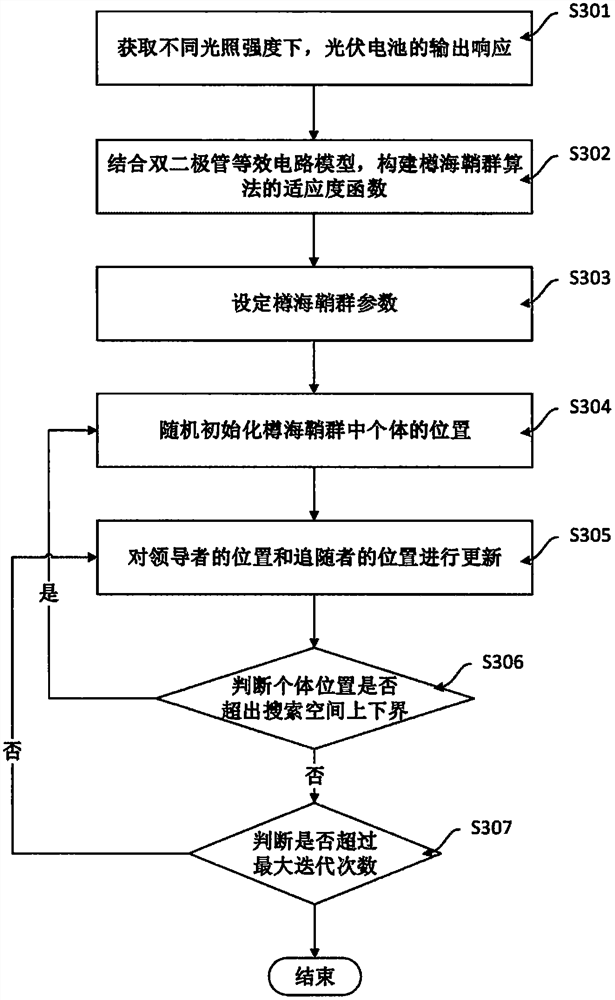Photovoltaic cell model parameter identification method and device based on salp swarm algorithm
A photovoltaic cell model and salp group technology, which is applied in the field of photovoltaic cell model parameter identification method and device based on the salp group algorithm, can solve the problem of low matching degree of output characteristics, inaccurate parameter identification, and inaccurate photovoltaic cell equivalent model. Accuracy and other issues to achieve the effect of easy implementation, high flexibility, and improved accuracy
- Summary
- Abstract
- Description
- Claims
- Application Information
AI Technical Summary
Problems solved by technology
Method used
Image
Examples
Embodiment 1
[0038] Embodiment 1: as attached figure 1 As shown, this embodiment discloses a photovoltaic cell model parameter identification method based on the salp group algorithm, including:
[0039] Step S101, obtaining output responses of photovoltaic cells under different light intensities, wherein the output responses include voltage, current and power;
[0040] Step S102, combining the double-diode equivalent circuit model, constructing the fitness function of the salp swarm algorithm;
[0041] Step S103, initializing the position of the salp group individual and setting the parameters of the salp group, wherein the parameters of the salp group include the population size of the salp group, the number of iterations, the upper and lower boundaries of the search space, leaders, followers and food sources;
[0042] Step S104, iterating in a loop, updating the positions of the leader and the follower, and outputting the identification result according to the set iteration end conditi...
Embodiment 2
[0047] Embodiment 2: as attached figure 2 As shown, this embodiment discloses a photovoltaic cell model parameter identification method based on the salp group algorithm, including:
[0048] Step S201, obtaining output responses of photovoltaic cells under different light intensities, wherein the output responses include voltage, current and power;
[0049] Step S202, obtaining the mathematical expression of the double-diode equivalent circuit model, that is, using the double-diode equivalent circuit model as the photovoltaic cell equivalent circuit model, as follows:
[0050]
[0051] in, V is the voltage across the load, I is the current through the load; I ph is the photogenerated current, I sd1 is the reverse saturation current of the first diode, Isd2 is the reverse saturation current of the second diode, η 1 , η 2 are the quality factor of the first diode and the quality factor of the second diode, respectively, R sh is the parallel resistance of the battery, ...
Embodiment 3
[0057] Embodiment 3: as attached image 3 As shown, this embodiment discloses a photovoltaic cell model parameter identification method based on the salp group algorithm, including:
[0058] Step S301, obtaining output responses of photovoltaic cells under different light intensities, wherein the output responses include voltage, current and power;
[0059] Step S302, combining the double-diode equivalent circuit model, constructing the fitness function of the salp swarm algorithm:
[0060] Step S303, setting the parameters of the salp group, the parameters of the salp group include the population size of the salp group, the number of iterations, the upper and lower boundaries of the search space, the leader, the followers and the food source, where the initial food source position is the one with the best fitness the location corresponding to the individual;
[0061] Step S304, randomly initialize the position of the individual in the salp group, and obtain the fitness of e...
PUM
 Login to View More
Login to View More Abstract
Description
Claims
Application Information
 Login to View More
Login to View More - R&D
- Intellectual Property
- Life Sciences
- Materials
- Tech Scout
- Unparalleled Data Quality
- Higher Quality Content
- 60% Fewer Hallucinations
Browse by: Latest US Patents, China's latest patents, Technical Efficacy Thesaurus, Application Domain, Technology Topic, Popular Technical Reports.
© 2025 PatSnap. All rights reserved.Legal|Privacy policy|Modern Slavery Act Transparency Statement|Sitemap|About US| Contact US: help@patsnap.com



